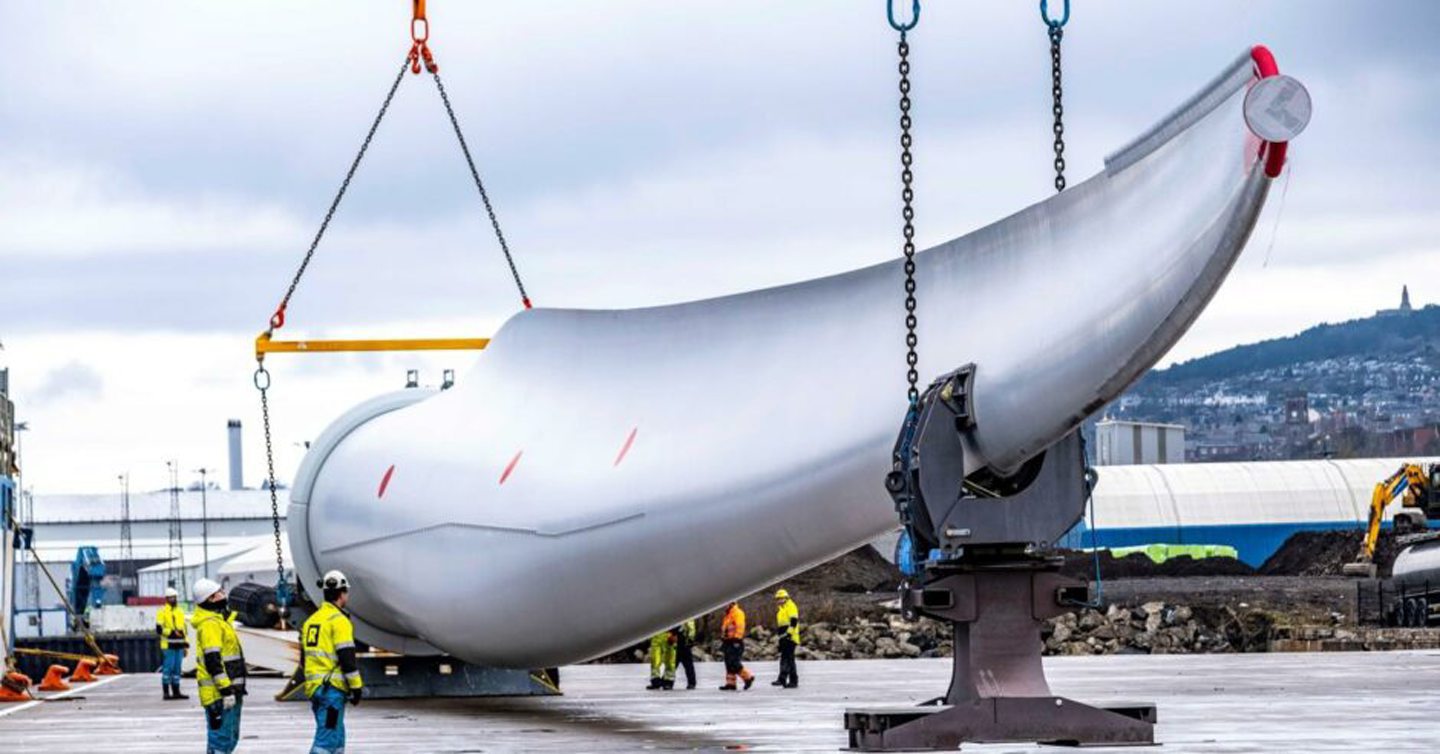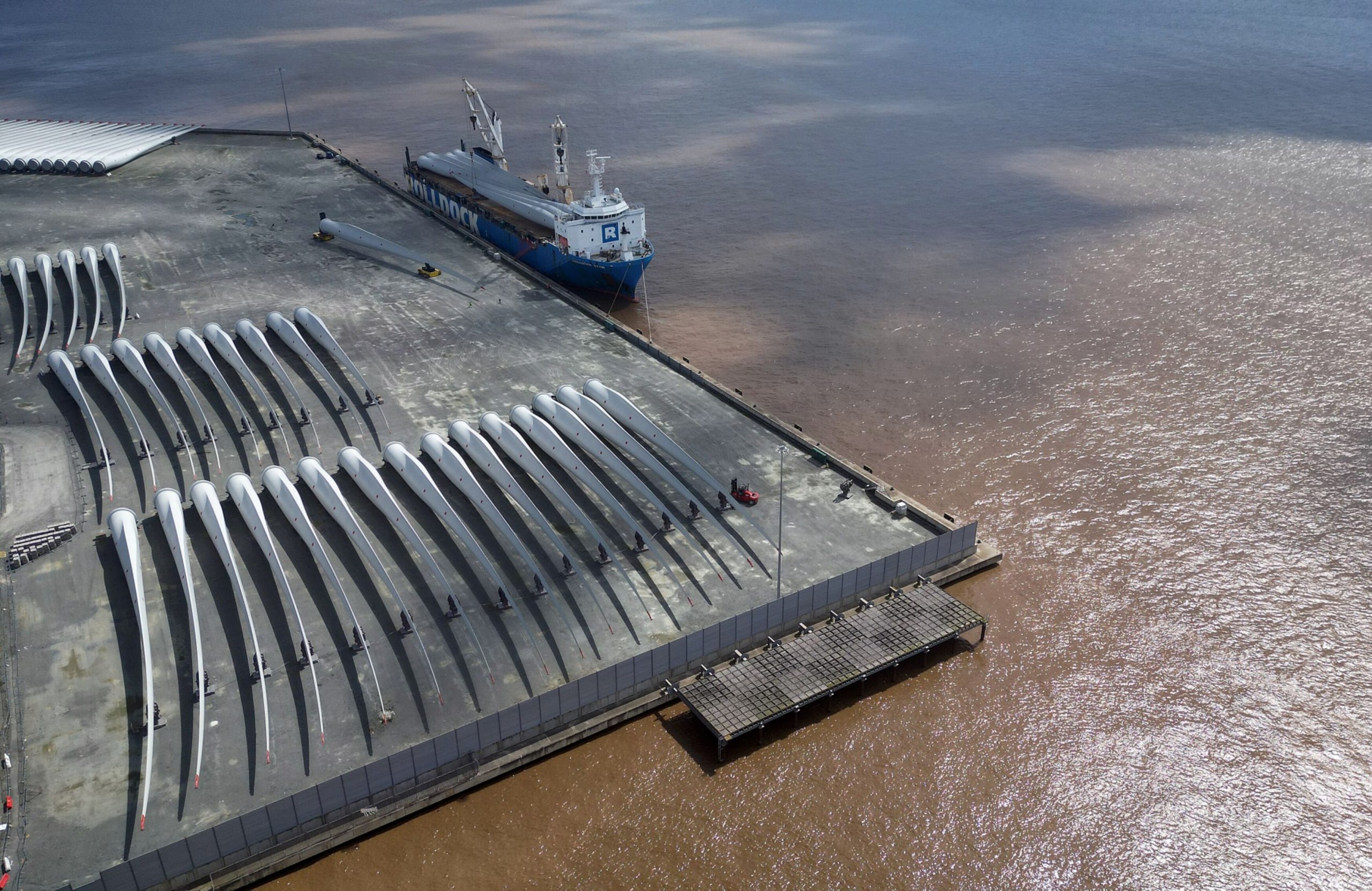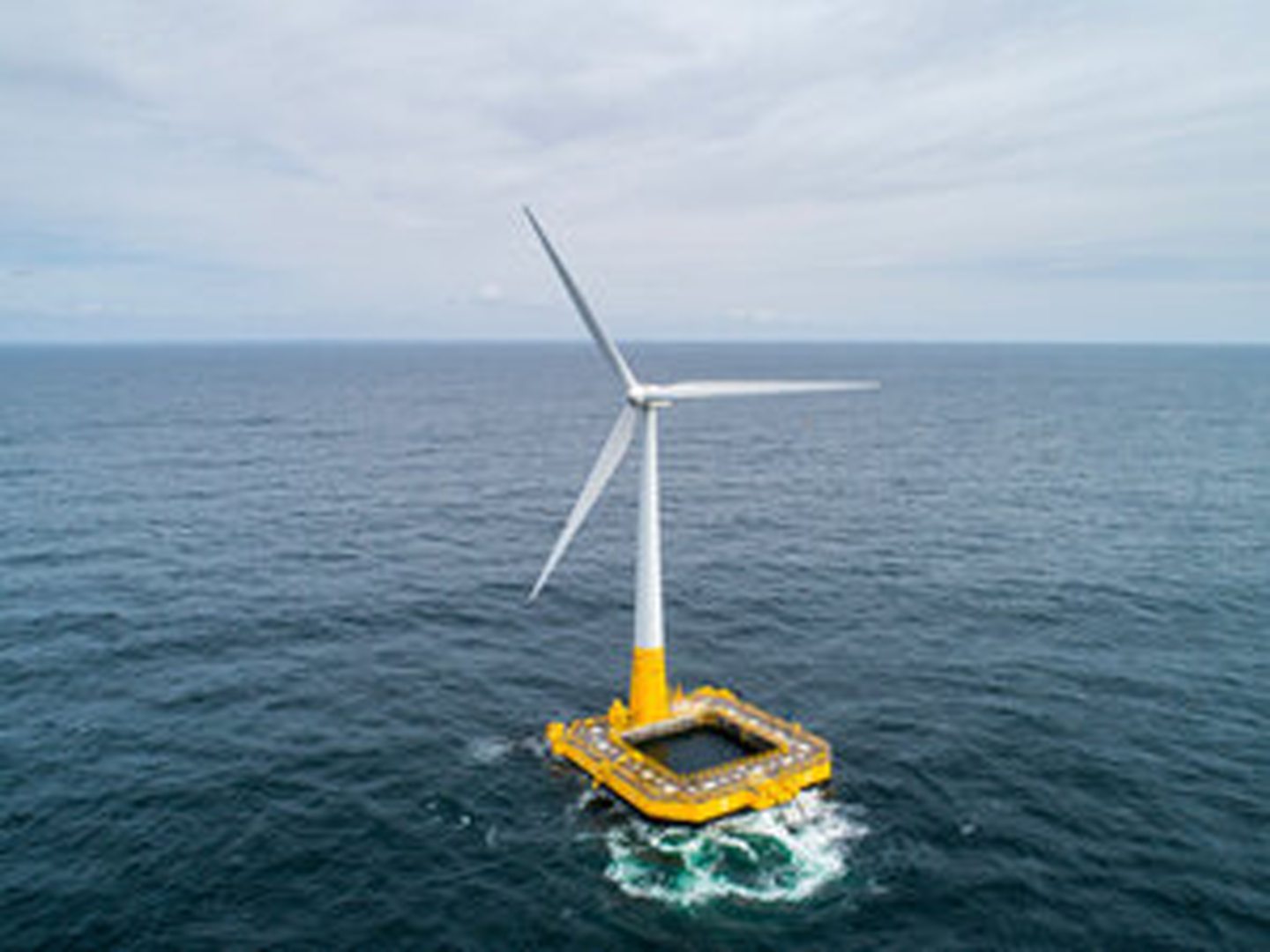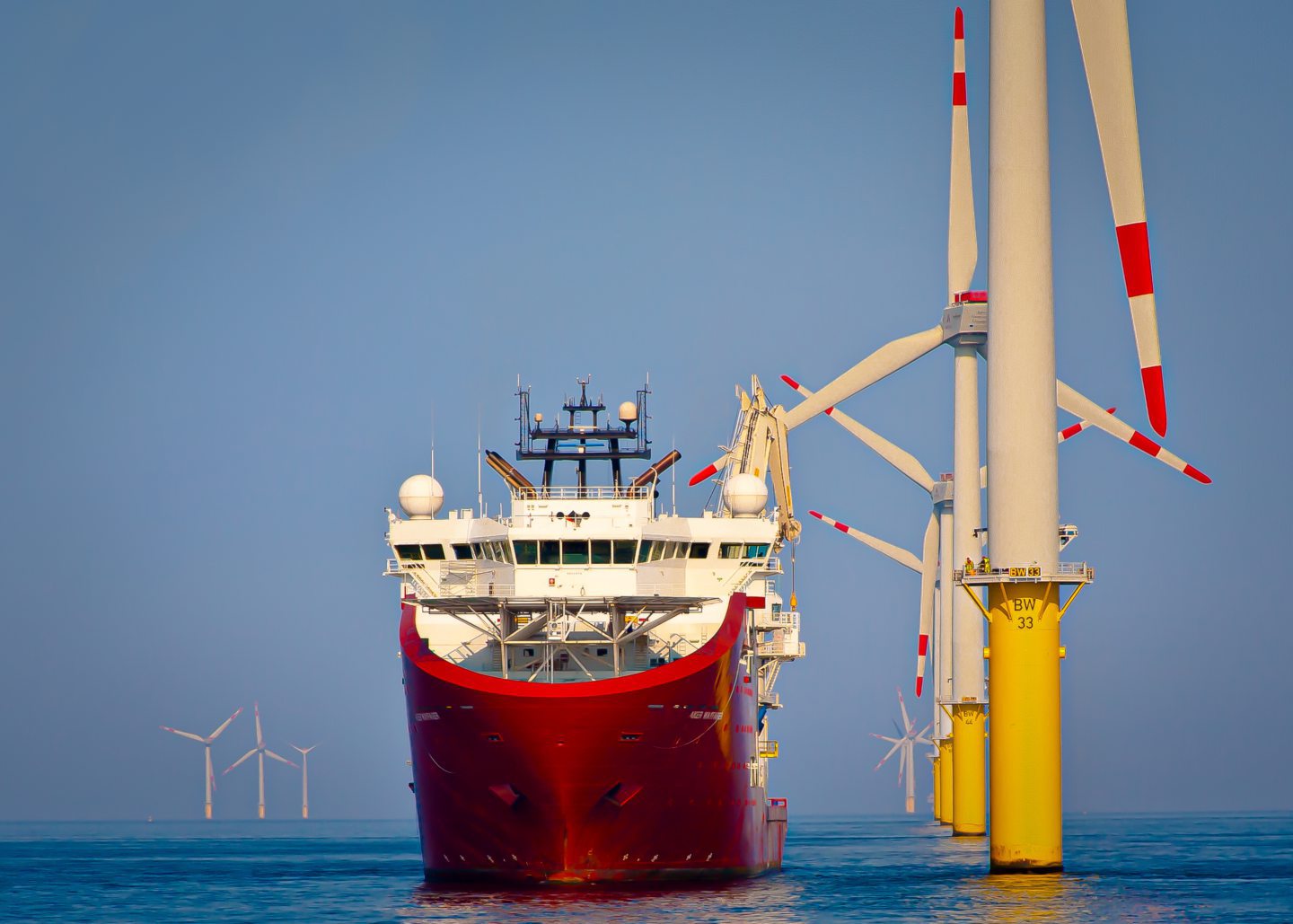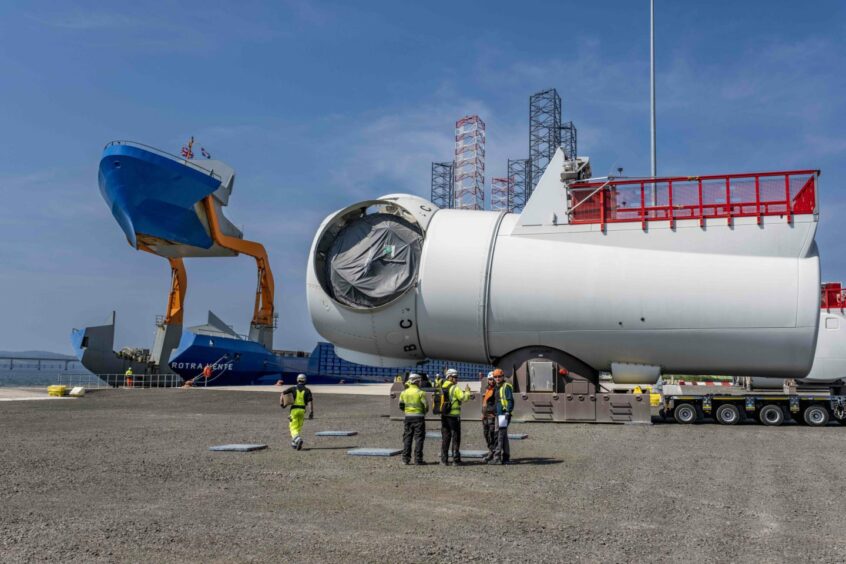 © Supplied by EDF Renewables
© Supplied by EDF Renewables A new report has found the UK could fail to reach its net zero goals and lose out on thousands of jobs unless it moves to increase domestic offshore wind manufacturing.
The Institute for Public Policy Research (IPPR) estimates that at the current pace of installation, the UK will fail to meet its 2030 target to deploy 50GW in offshore wind capacity until 2048.
The UK will need to triple the rate it installs offshore wind farms to get back on track, the IPPR says, with low levels of domestic wind manufacturing a key barrier to faster progress.
Across every major component of the offshore wind supply chain, including nacelles, blades, towers, foundations and cables, the IPPR said the UK falls outside the top three producers in Europe.
Additionally, the UK has no facility capable of manufacturing nacelles, or any major firm specialising in wind towers.
As a result, between 2019 and 2021 the UK has been the world’s largest importer of wind turbines, the report said.
The UK’s relatively weak specialisation in wind manufacturing translates into a “structural dependency on imported wind products”, which the report said is neither a sustainable nor a cost-effective strategy.
UK ‘missed out’ on wind opportunity
The report estimates the UK has already missed out on billions of pounds of economic benefits after failing to capitalise on its offshore wind potential.
If the UK had matched Denmark, Germany, and Spain in terms of wind manufacturing, the IPPR said it would have boosted the economy by an additional £30bn between 2008 and 2022.
IPPR associate fellow Simon Gasperin said the UK has “missed out on becoming a world leader not just in wind power, but also in wind manufacturing”.
“This has cost thousands of jobs, billions for the economy, and is putting future net zero targets for wind deployment at risk,” he said.
However despite this, Mr Gasperin said the UK is “uniquely placed” to become a world leader in manufacturing equipment for offshore wind farms.
“The government should grasp this opportunity with both hands and do all it can to maximise the manufacturing opportunity of its offshore wind power targets,” he said.
The report found the UK could potentially “leapfrog” competitors in Europe and China by producing larger and more efficient turbines, with other countries “stuck with partially outdated investments” and existing plants in need of retrofitting.
Significant global offshore wind demand
Report author Joshua Emden told Energy Voice that even with Chinese and European firms leading the market, there are still opportunities for the UK.
“There is going to be a manufacturing crunch, there’s currently just about enough to meet demand but there is a huge opportunity,” he said.
“That is why in some ways we don’t necessarily need to compete with the US and China because everyone needs to develop manufacturing capabilities.”
While Mr Emden said moves from wind turbine manufacturers Vestas and Mingyang to set up facilities in Scotland were encouraging, more investments will be needed.
The IPPR said in less than five years the UK “can and should” invest around £3.2bn to build at least one additional blade factory, two new nacelle and tower factories and two extra foundation factories.
To meet the current 50GW target by 2030 will require around 2,500 wind turbines with an average capacity of 14MW, the IPPR said.
Meet 50% of this demand with domestic manufacturing could create up to 30,000 jobs in the UK according to the report.
CfD reform, supply chain grants and ports
With the UK wind sector “at a crossroads”, the think tank also made three main policy recommendations for the next UK government to keep the 2030 target on track.
The first recommendation is to reform the current model of the Contracts for Difference (CfD) scheme by providing consistent and longer-term contracts for developers.
As part of these reforms, the IPPR also recommended non-price criteria for CfD rounds to prioritise domestic manufacturing.
The UK government has proposed introducing Sustainable Industry Rewards from Allocation Round 7, but the IPPR this will have a limited effect without a wider industrial strategy.
On the production side, the IPPR recommended supporting businesses to expand UK production capacity through grants and other financing measures.
The IPPR recommends the UK focus on floating wind technologies alongside making the OWMIS and FLOWMIS investment schemes permanent and more highly targeted.
Lastly, the report recommends upgrading the infrastructure capacity of ports and naval vessels for offshore wind installation.
Public financing bodies like the UK Infrastructure Bank could play a pivotal role in jointly financing port upgrades, alongside a newly created National Investment Fund.
“Crucially, this investment should focus on non-freeport areas, as freeports can encourage developers to import components and employment rather than build domestic capacity,” the IPPR said.
Labour’s GB Energy
The IPPR report also included a number of recommendations for the role Labour’s proposed publicly-owned body GB Energy could play.
The report said GB Energy “could be a linchpin” for promoting joint venture investments with private wind turbine developers and even participate in CfD rounds “with an explicit mandate to create domestic supply chains and local jobs”.
GB Energy could also address a looming shortage in wind installation vessels by operating a national fleet which could be made available to UK wind developers.
Finally, the IPPR suggested GB Energy could also play a role in securing a long-term supply of critical rare earth materials needed in manufacturing wind components.
UK has ‘extraordinary opportunity’
Industry body RenewableUK said the IPPR report highlights the “extraordinary opportunity” the UK has to secure “hundreds of millions of pounds” in new offshore wind manufacturing investment.
RenewableUK recently released its own Offshore Wind Industrial Growth Plan which aims to triple UK supply chain manufacturing in ten years.
RenewableUK head of supply chain Ajai Ahluwalia said delivering the plan could support an additional 10,000 jobs per year and boost the UK economy by £25bn between now and 2035.
Mr Ahluwalia said the plan will enable UK industry and governments to better align investments to mobilise £3bn in funding nationwide, primarily through private finance.
“This will bring a return to our economy of just under £9 for every £1 invested,” he said.
